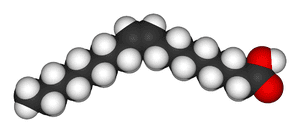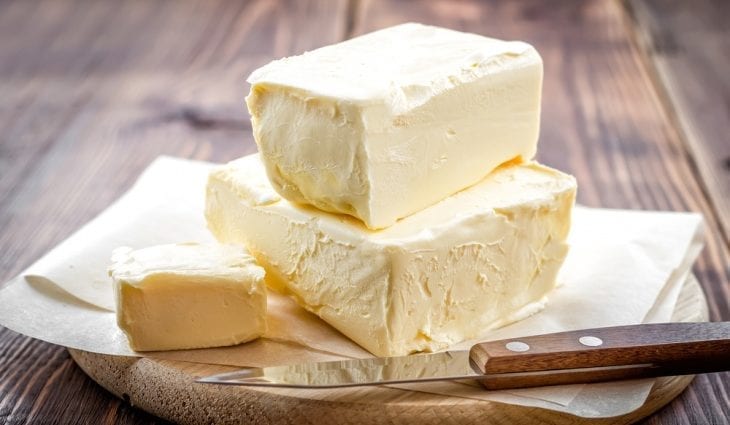Contents

What are TRANS fats?
Unfortunately, in the minds of the layman, the concept of “TRANS fats” is a little different from other popular horror stories.
Now we will tell about why they are called so, where they are, and why they are bad. Let’s start with the title. The word “TRANS” in this case it’s purely from chemistry. An organic molecule having a double bond can be deployed in space:

Accordingly, a component of fat — fatty acid at one and the same formula can stand this “area” (CIS-isomer):

(TRANS-isomer):

In nature, it is a much more common CIS form, but TRANS – also occurs in small amounts (usually up to 5% of the amount of fat in the fats of milk and meat of ruminants).
A much greater percentage of TRANS isomers obtained in the artificial fats, obtained chemically by hydrogenation of vegetable oils. We have a similar product called the Margarine, spreads, confectionery fats, and even “fats of a special purpose”. In such products, the proportion of TRANS-fatty acids may reach 50%.
And they are worse than other fats, you ask?
As it turned out in the last decade, TRANS fats have a very bad effect on the blood cholesterol, and they lower levels of “good cholesterol” — HDL and raise levels of “bad” LDL. And that, according to doctors, directly increases the likelihood of cardiovascular disease, including mortality from heart attacks and strokes.
It is necessary to understand that
- complete elimination of TRANS fats from food is impossible: even in the breast milk has a few percent of fat we call TRANS fats. Natural “organic” product contains up to 5% of TRANS fats.
- in addition to the impact on cholesterol, there is no proven harm from TRANS fats, although research is ongoing. The difficulty also is that there are dozens of different TRANS fatty acids in foods, and probably each of them can have a special effect on the body.
Therefore, if you have no problems with cholesterol, then the problem of TRANS fats is not urgent for you. But if you are at risk for cardiovascular disease, you should know:
- Avoid Margarine, artificial spreads, fast food, deep-fried.
- In confectionery products, always pay attention to ingredients: cookies, muffins, and other confections frequently are not of carbohydrate, but the carbohydrate-fat product and TRANS fats sometimes hide behind different names. Any fat of unknown origin, most likely, is artificially hydrogenated vegetable fat with a large percentage of TRANS fats.
At the global level, the WHO is concerned that even with the current rate of 1% and average consumption is below this norm, some subgroups of the population can get from food significantly large quantities. WHO experts acknowledge that there is neither the opportunity nor the need to limit TRANS-fats found in natural sources since to date there is no evidence of harm from small amounts of TRANS fats.
However, artificially produced TRANS-fats used by the food industry and catering establishments, the experts recommend gradually eliminated and urged governments to take steps forcing businesses to look for a replacement to the existing fats with a high content of TRANS-isomers. And many countries have changed the legislation to limit the norms of permissible content of TRANS fats in prepared foods.
Yet there are no compulsory norms and standards for the TRANS fat content in most products (for some product-specific Standards regulate it), but just compliance with the above principles of supply automatically protects us from excessive consumption.
TRANS fats are not a reason to be afraid of natural sour cream, cheese, butter, and milk: there is little enough of TRANS fat that they significantly impact health. Vegetable fats (meaning the liquid variety) have a much better effect on cholesterol, and therefore increase them by reducing animal fats is the main dietary recommendation at the risk of heart disease and blood vessels.
Example of the content of TRANS fats in various products:
| Products | Content,% |
|---|---|
| Milk fat | 2,3 — 8,6 |
| Beef fat | 2,0 — 6,0 |
| Crude oil | <0,5 |
| Refined vegetable oil | <1 |
| Table Margarines | 0,1 — 17 |
| Margarines for baking | 20 — 40 |
| Cooking fats, shortening | 18 — 46 |
(source)
Basic misconceptions, abundantly circulating in the Network:
- False: TRANS fats are mayonnaise
Truth: TRANS fats may be present in mayonnaise because mayonnaise is made from ordinary vegetable oil
- The lie: “TRANS fats are toxic”
Truth: TRANS fats are not toxic, it is the same food as any other oil
- False: “TRANS fats cause cancer”
Truth: there is no connection between TRANS fats and cancer
- The lie: “in fried foods there are TRANS fats”:
Truth: TRANS fats are only in fried food, which was fried in TRANS-fats.
- The lie: “the natural TRANS fats are safe, unlike artificial”
Truth: there is no difference between the influence of natural and artificial TRANS-fats, just in quantity, and in artificial sources, indeed, there are much more TRANS fats
Popular sources of TRANS fats are often confused:
- with transgenic food, apparently because of the prefix “TRANS”. TRANS fats do not have any relation to genetically modified organisms, at least, due to the absence of genes 🙂 moreover, they are produced, including natural organisms.
- with fried butter and fried foods. The reason for this is clear: one of the main sources of both — the fried food from fast food. However, we must understand that they are not related things: burnt oil is burnt oil, in fact, contain many poisons and carcinogens and TRANS fats are TRANS fats, which are often, but not always, included in the composition of frying oils. But by themselves, TRANS-fats are not more carcinogenic than ordinary vegetable oils, any fried food contains a lot of carcinogens, the oil initially not.
- Vegetable substitutes for milk fat. Actuallu, in dairy products based on palm oil on the contrary, there is less TRANS fat than in natural dairy products. In milk there are natural TRANS fatsbut in palm and coconut oil, there are not. But a lot of authors seem so sure that “TRANS -” is just “all bad, artificial” that and not trying to minimally understand the subject about which they write. However, there are artificial substitutes, usually, a powder containing TRANS fats, read the composition of a particular product.
- Any other horror stories: preservatives, pesticides, and even radioactive substances. This unscientific nonsense makes no sense to even comment, but to complete the picture added to the listing.
For more about TRANS fats watch the video below:
Unsaturated vs Saturated vs Trans Fats, Animation










